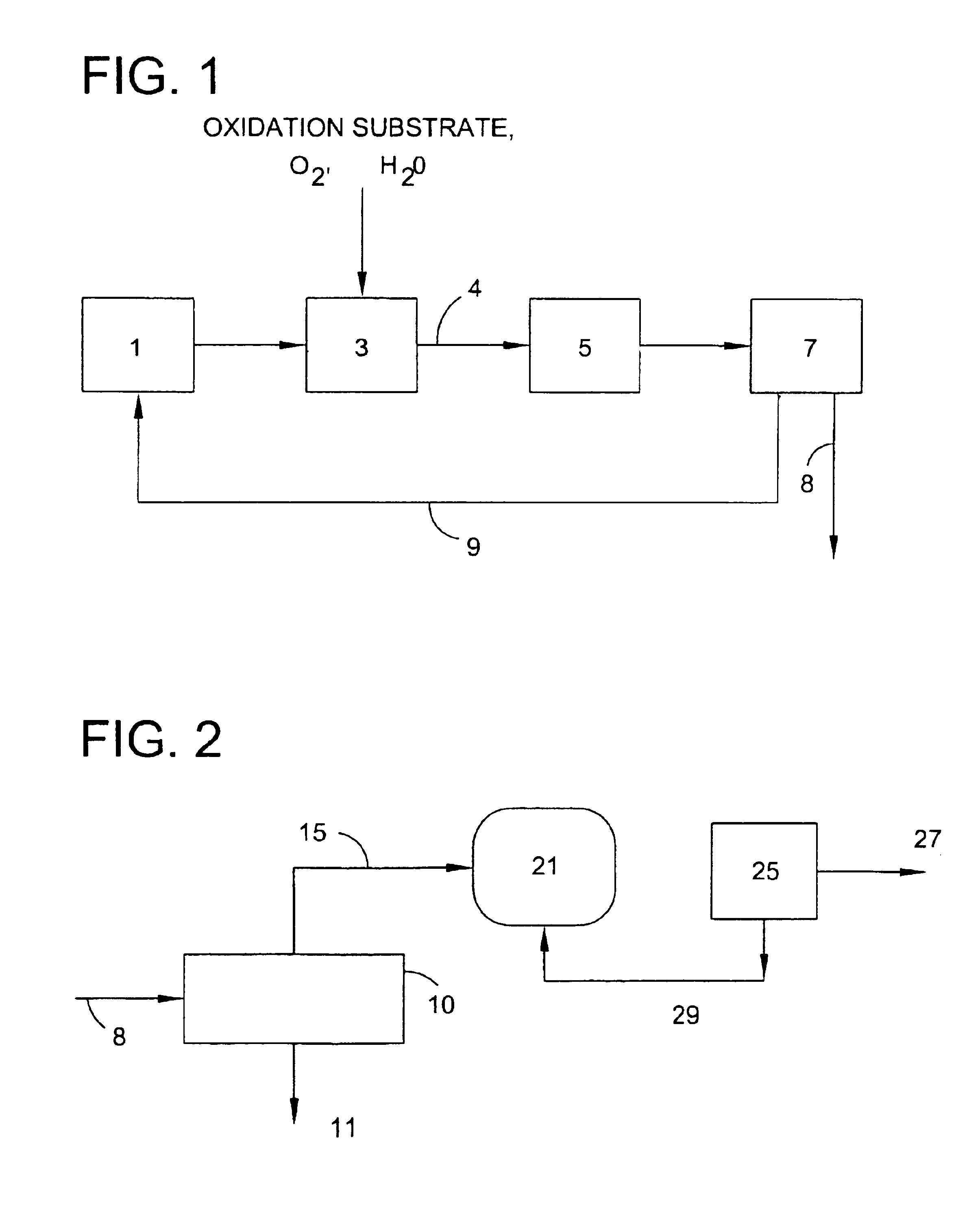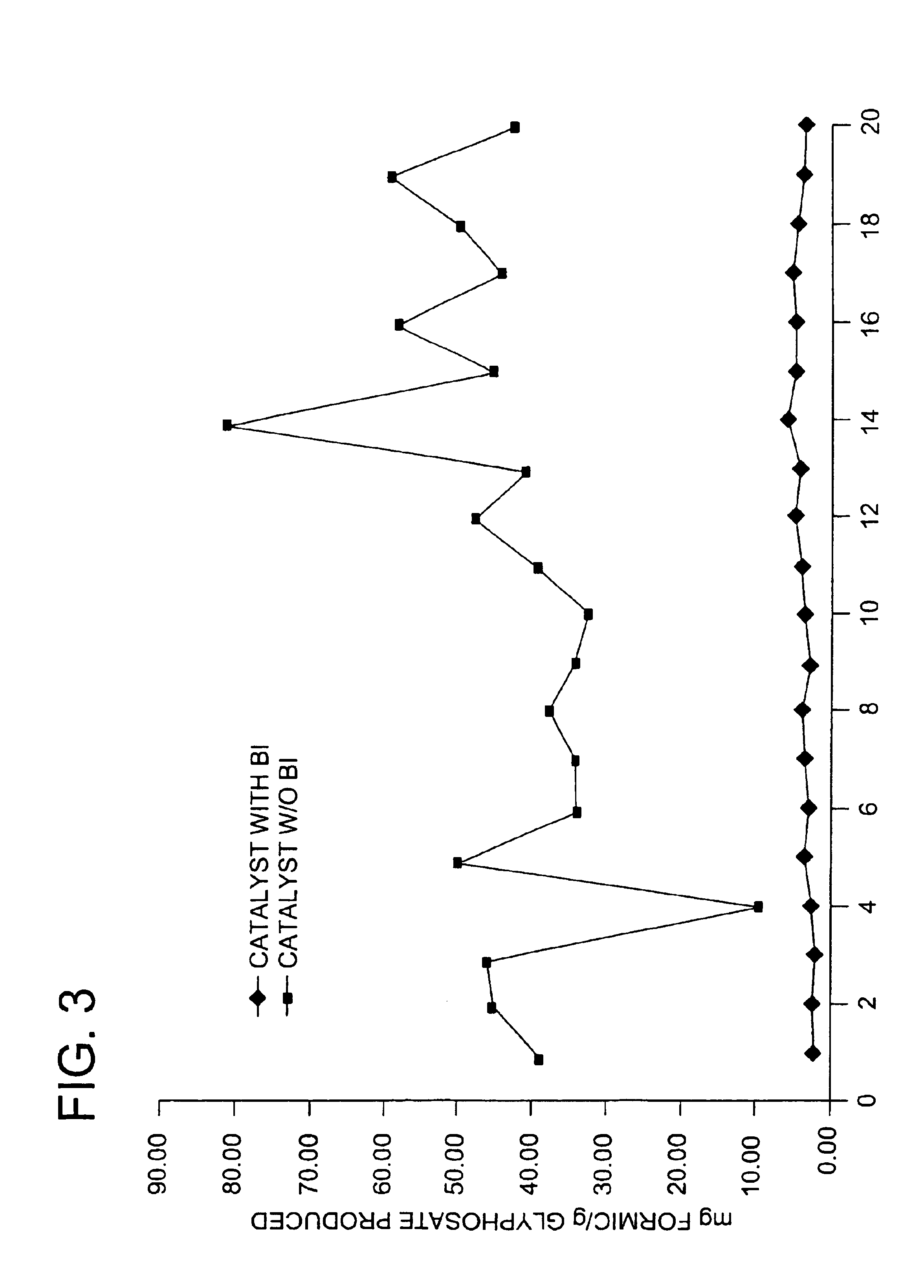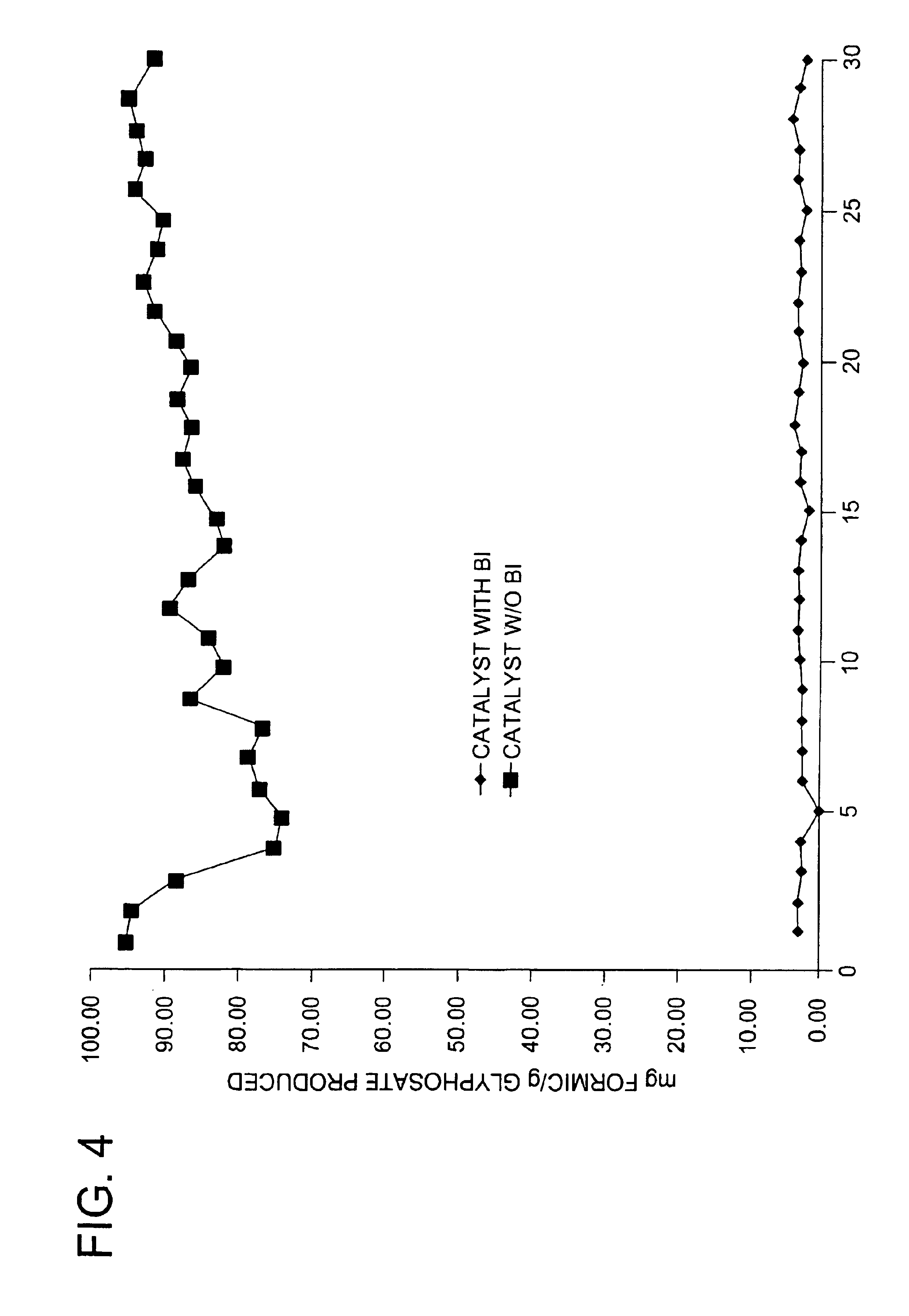Use of a supplemental promoter in conjunction with a carbon-supported noble-metal-containing catalyst in liquid phase oxidation reactions
a noble metal and catalyst technology, applied in the direction of catalyst activation/preparation, metal/metal-oxide/metal-hydroxide catalysts, physical/chemical process catalysts, etc., can solve the undesirable effects of formaldehyde by-product itself, high loss of costly noble metals into reaction solution, and enhanced activity of carbon-supported noble metal-containing catalysts used to catalyze the oxidation. , the effect of increasing the oxidation of formic acid
- Summary
- Abstract
- Description
- Claims
- Application Information
AI Technical Summary
Benefits of technology
Problems solved by technology
Method used
Image
Examples
example 1
Measuring Pore Volume of Carbon Support
[0214]A Micromeritics ASAP 2000 surface area and pore volume distribution instrument was used to acquire the data. Total surface area determination involves exposing a known weight of a solid to some definite pressure of a non-specific adsorbate gas at a constant temperature, e.g., at the temperature of liquid nitrogen, −196° C. During equilibration, gas molecules leave the bulk gas to adsorb onto the surface which causes the average number of molecules in the bulk gas to decrease which, in turn, decreases the pressure. The relative pressure at equilibrium, p, as a fraction of the saturation vapor pressure, po, of the gas is recorded. By combining this decrease in pressure with the volumes of the vessel and of the sample, the amount (i.e., the number of molecules) of gas adsorbed may be calculated by application of the ideal gas laws. These data are measured at relative pressures (p / po) of approximately 0.1 to 0.3 where the Brunauer, Emmett and...
example 2
High-temperature Deoxygenation of a Carbon Support
[0215]The high-temperature deoxygenation procedures described in the following examples may be used with any carbon support to produce a deoxygenated carbon support.
Single-step High-temperature Deoxygenation #1 Using NH3 / H2O Gas
[0216]An activated carbon support (2.5 g) was placed into a 1.9 cm I.D.×40.6 cm length quartz tube. The tube was connected to a gas stream resulting from sparging a 70 to 100 ml / min. N2 stream through a 70° C., 10% NH4OH aqueous solution. The quartz tube then was placed into a preheated 30.5 cm tubular furnace and pyrolyzed at 930° C. for 60 min. and then cooled to room temperature under a dry N2 atmosphere without contacting any air.
Single-step High-temperature Deoxygenation #2 Using NH3 / H2O Gas
[0217]An activated carbon support (3.55 g) was placed into a 1.9 cm I.D.×35.6 cm long quartz tube. The tube was connected to streams of 50 ml / min. of NH3 gas and 89 ml / min. of steam and then placed into a preheated 30....
example 3
Depositing Platinum onto the Surface of a Carbon Support
[0221]Twenty grams of NUCHAR activated carbon SA-30 (Westvaco Corp. Carbon, Department Covington, Va.) was slurried in 2 L of water for 2 hours. Then, 2.81 grams of H2PtCl6 dissolved in about 900 ml of water was added dropwise over a period of 3 to 4 hours. After the H2PtCl6 solution was completely added, the slurry was stirred for 90 more minutes. The pH of the slurry then was readjusted to 10.5 using NaOH, and stirred for 10 to 14 more hours. The resulting slurry was filtered and washed with water until the filtrate reached a constant conductivity. The wet cake was dried at 125° C. under vacuum for 10 to 24 hours. This material produced 5% platinum on carbon upon reduction.
[0222]It should be recognized that the above procedure may be used to deposit platinum onto the surface of other carbon supports as well.
PUM
| Property | Measurement | Unit |
|---|---|---|
| Fraction | aaaaa | aaaaa |
| Fraction | aaaaa | aaaaa |
| Percent by mass | aaaaa | aaaaa |
Abstract
Description
Claims
Application Information
 Login to View More
Login to View More - R&D
- Intellectual Property
- Life Sciences
- Materials
- Tech Scout
- Unparalleled Data Quality
- Higher Quality Content
- 60% Fewer Hallucinations
Browse by: Latest US Patents, China's latest patents, Technical Efficacy Thesaurus, Application Domain, Technology Topic, Popular Technical Reports.
© 2025 PatSnap. All rights reserved.Legal|Privacy policy|Modern Slavery Act Transparency Statement|Sitemap|About US| Contact US: help@patsnap.com



